Spring Dreams
From the Hill Country to East Texas, the splendor of wildflower season delights
Photographs by Theresa DiMenno
Theresa DiMenno became enamored with photography when she bought her first 35 mm camera in 1977. An avid outdoorswoman with a conservationist’s heart, DiMenno specializes in nature and wildlife photography. She started by taking pictures of the plants inside a greenhouse set up by her boyfriend (now husband) in 2001. She got the hang of it quickly and later that decade began supplying Houston Methodist Hospital with abstract floral prints and Texas wildflower art. She has contributed to Texas Highways since 2013, and the photos featured here are a snapshot of her diligent work over the past decade.
In capturing bloom-blanketed vistas, DiMenno says she hopes to evoke a feeling of connection to the land and every weird and wonderful creature that inhabits it. DiMenno notes that the seven featured wildflowers are native to Texas and thus critical to the survival of our native bees and butterflies. “Wildflowers aren’t here simply for our enjoyment,” she says. “They provide a range of benefits, including pollination and food sources for insects and other wildlife. It’s deeper than a wildflower being pretty.” When DiMenno isn’t behind the camera, she volunteers at the Lady Bird Johnson Wildflower Center in Austin. —Christopher Collins
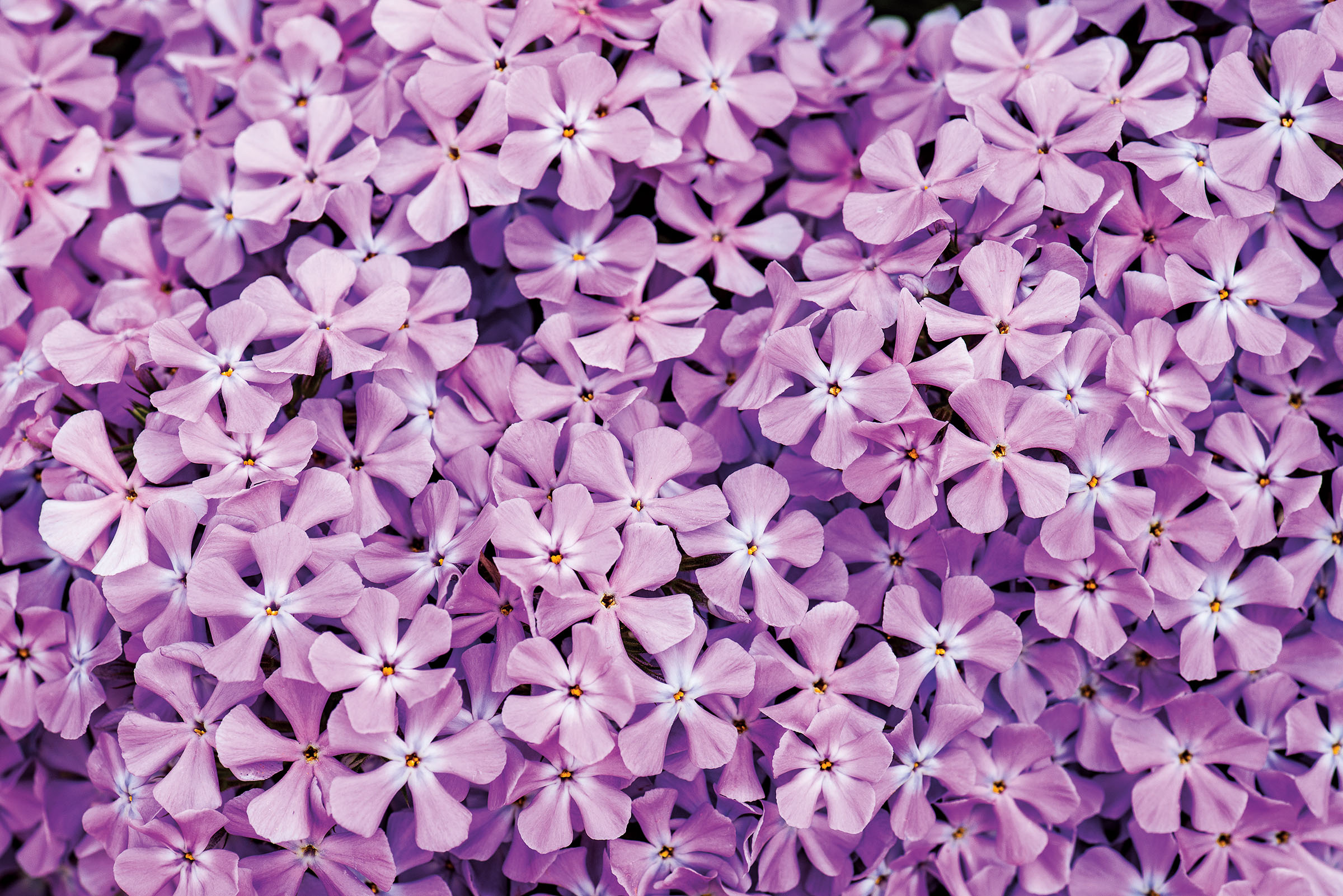
Phlox
Also known as prairie phlox or fragrant phlox, the perennial plant creates tubular flowers that unfold in pairs and give off a sweet, delicate scent. The flowers range in color from pale pink to lavender and bloom from March through August. It can be found in most Texas habitats, including in the pine thickets of East Texas and the semiarid environs of the Edwards Plateau. Among the pollinators attracted to phlox are long-tongued bees and tiny, brightly colored butterflies called skippers.
Top photo: Indian paintbrush and bluebonnets at sunset near Ennis.
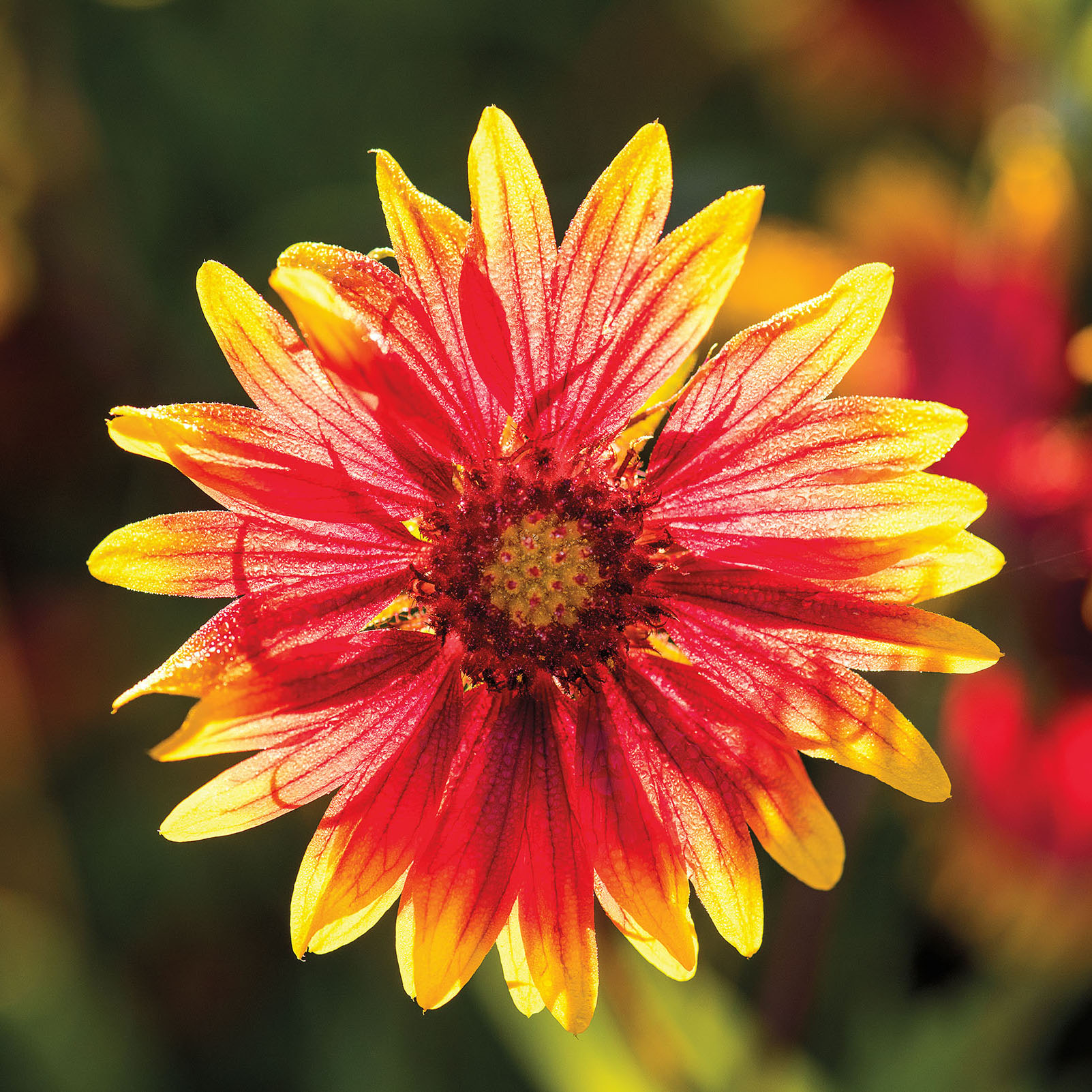
Indian blanket
One of the few annual plants featured, the Indian blanket is a prolific bloomer statewide, decorating highway medians and prairies with tie-dyed pinwheels of yellow and red. Some species are entirely yellow, while another was cultivated to be pink. These herbaceous plants can produce blooms all year long, especially in the western parts of the state. It has some medicinal uses and is considered an omen of good luck by the Kiowa tribe.
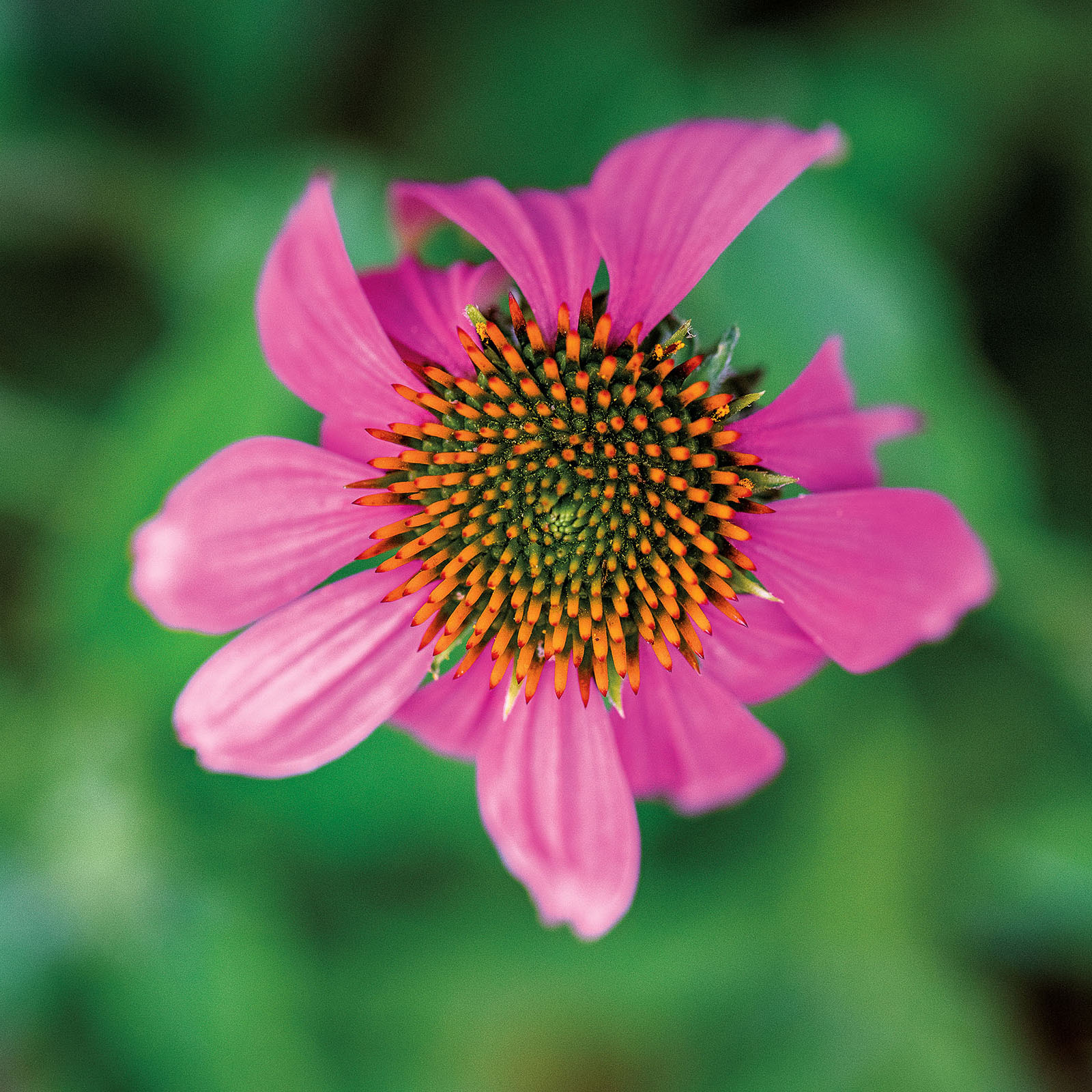
Purple coneflower
This eye-catching perennial plant is in the aster family, one of the largest families of plants, and includes daisies, sunflowers, and chrysanthemums. It’s also called echinacea, from the Greek echinos, meaning hedgehog. The prickly brown disc at the center of the flower’s drooping lavender petals does resemble the curled-up animal. Since it takes easily to cultivation, purple coneflower stuns on the roadside and in gardens. Blooms usually last through September.
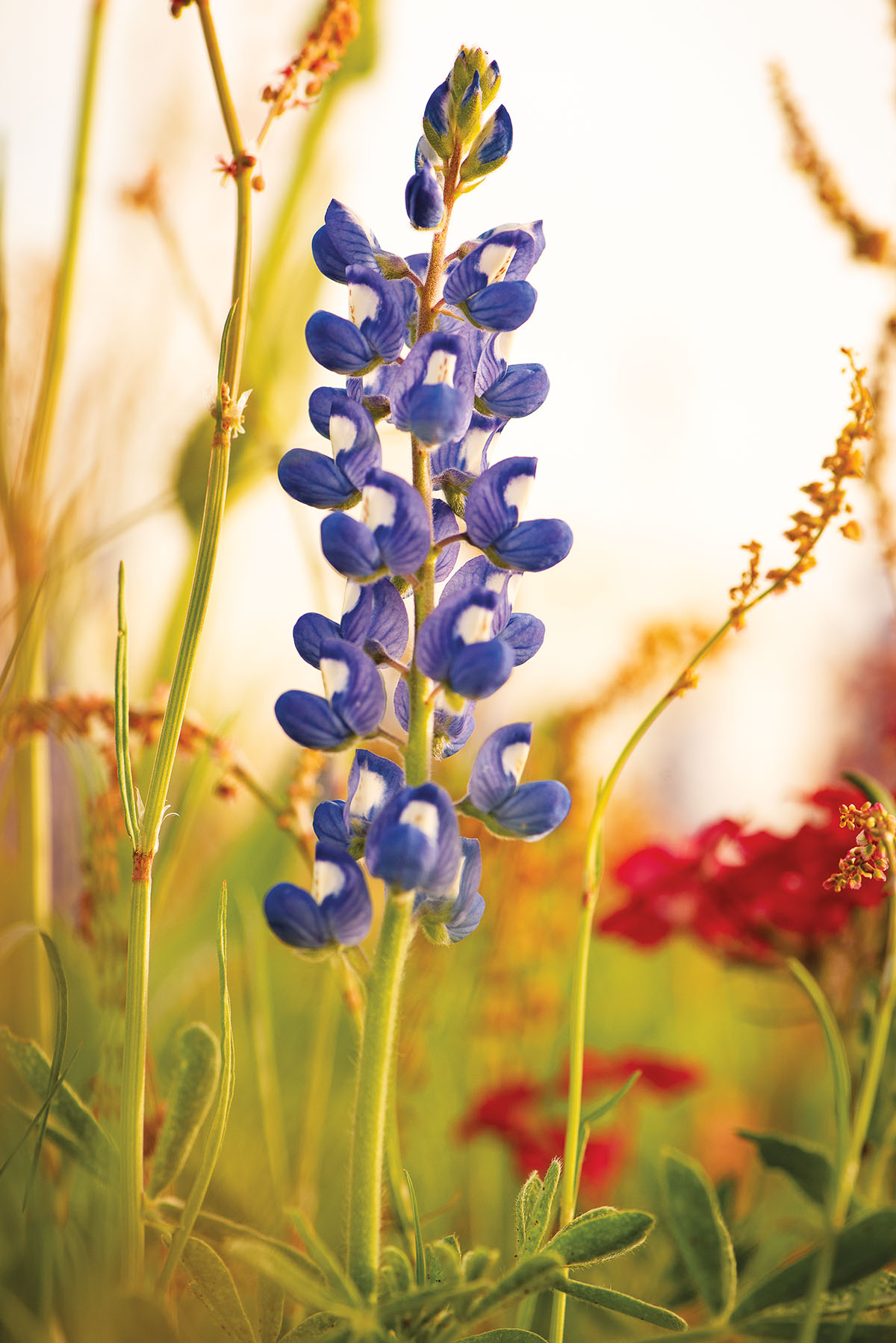
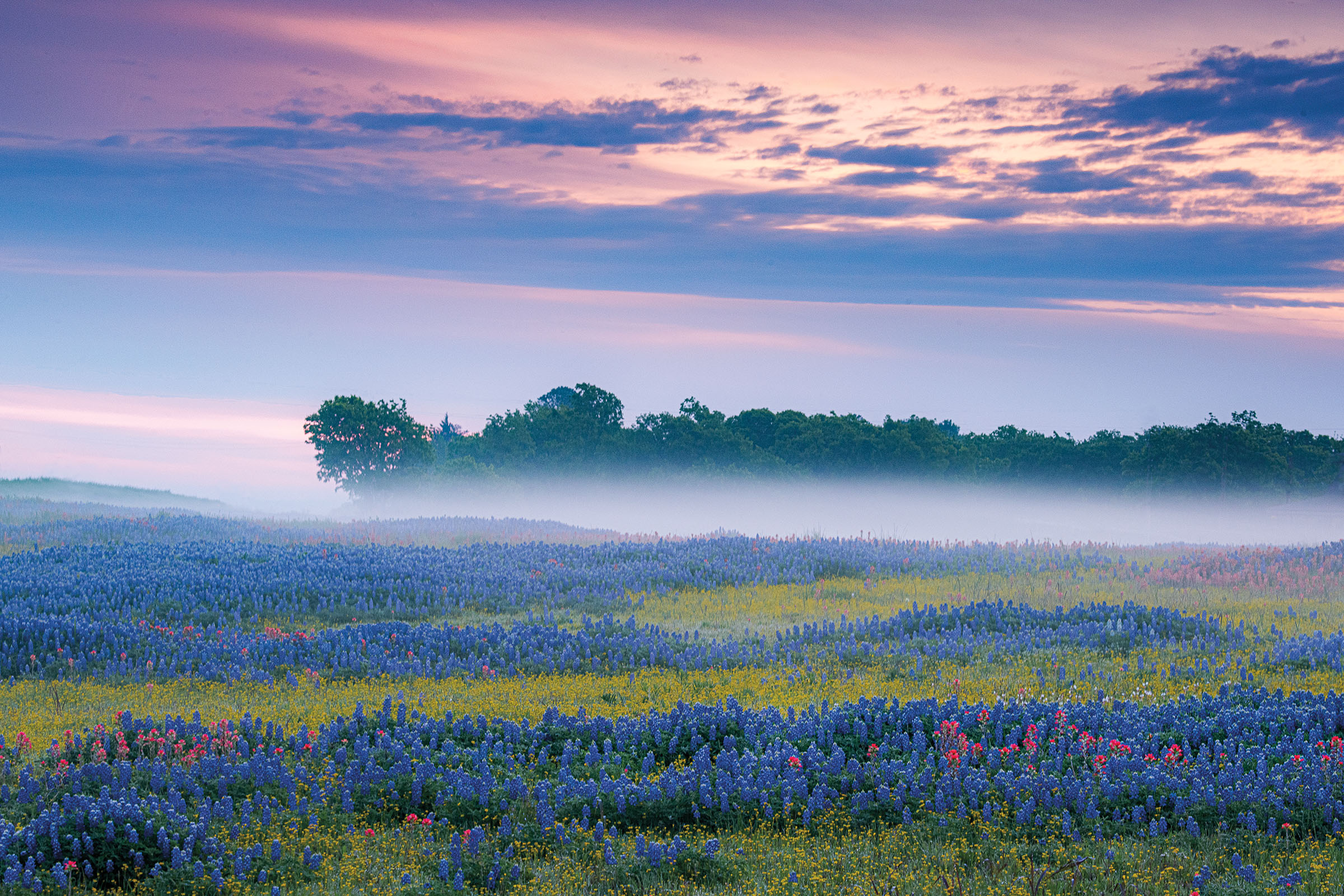
Bluebonnet
Not so much the state flower as state flowers, the bluebonnet accounts for six varieties of wildflowers that grow in Texas. At the turn of the century, the species that carried the distinction of Texas’ state flower was Lupinus subcarnosus. Later, Texans wanted a different species, Lupinus texensis, to take the throne. The matter of petal politics was sorted out in 1971 when the Texas Legislature declared that any plant in the genus Lupinus, so long as it looks like a bluebonnet, is our state flower. When DiMenno brings these bluebonnets in Ennis into close focus, you’re treated to a peek at the intricate patterns and shapes stitched within. “It’s got all these layers to it, different colors and variations,” she says. “One of the most astonishing things to me is the way the bee folds into the petals of the bluebonnet—it’s a perfect fit.”
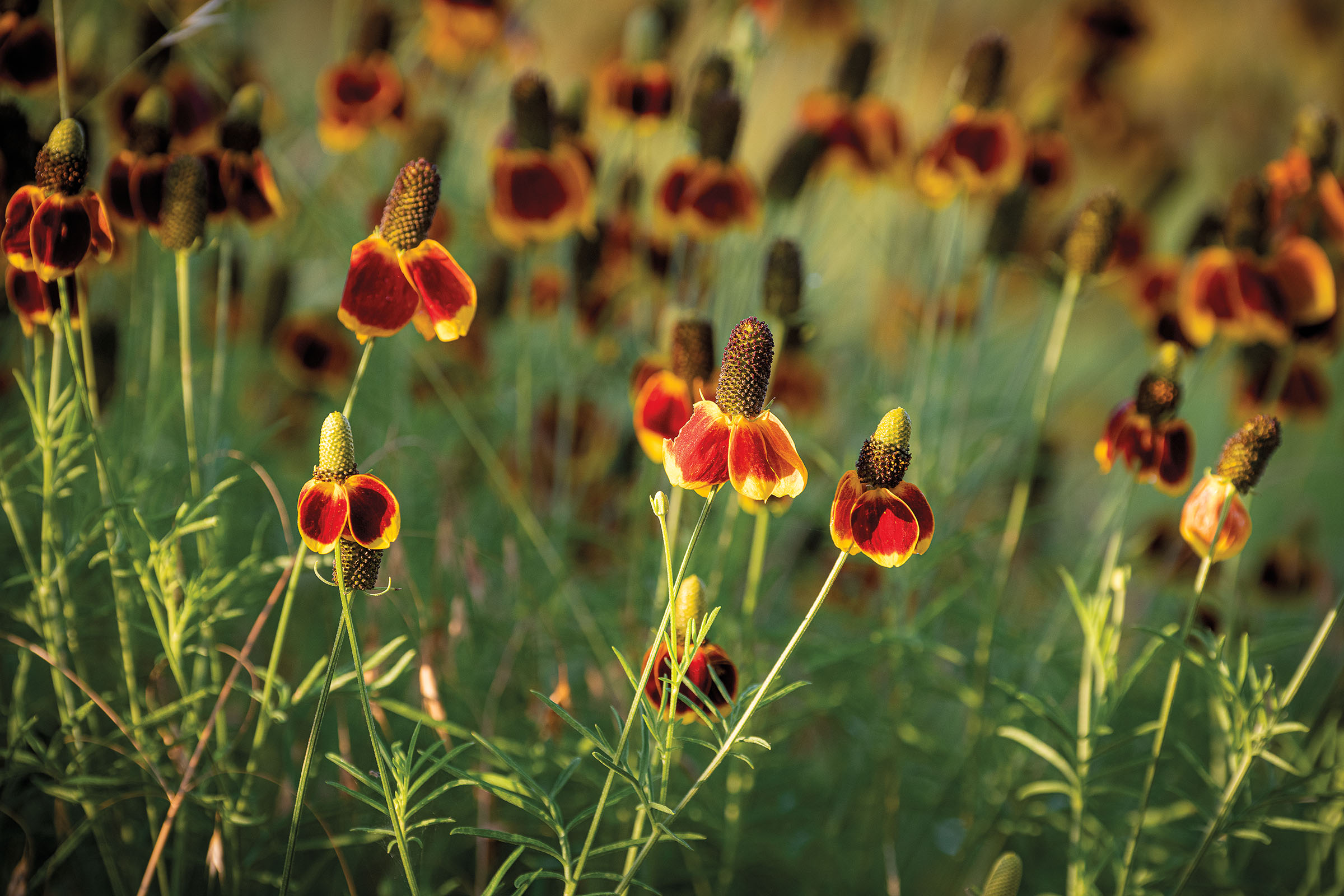
Prairie coneflower
The slender, leafless stalks of this perennial plant can grow 3 feet tall, allowing the prairie coneflower to tower over its colorful counterparts in wildflower arrangements. The plant makes good use of high ground: It displays sets of sombrero-shaped flowers, the brim formed by a circlet of sunburst yellow and red. Prairie coneflower has a short blooming season—from May through October—and needs sufficient rain to sustain blooms into the fall.
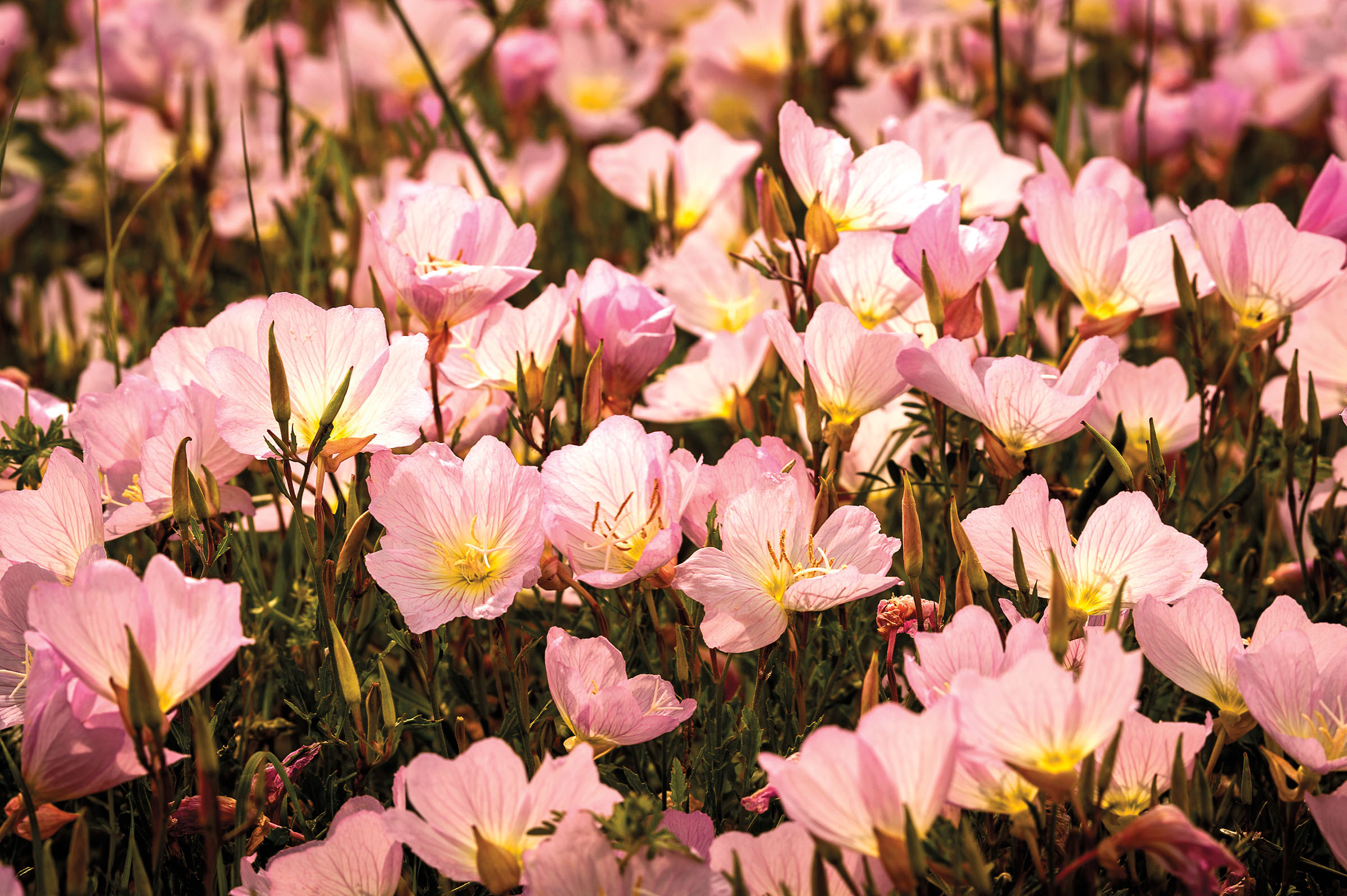
Pink Evening Primrose
It’s tough to succeed as a wildflower in Texas, and the pink evening primrose is more resilient than its name suggests. The drought-tolerant, sun-loving perennial grows in low, sprawling mounds and in many regions unfurls a canopy of delicate pink flowers at a time when most other plants are getting ready for bed. The four-petaled flowers attract nighttime pollinators such as the hawk moth, a starkly patterned sphinx moth that resembles a hummingbird in flight. Pink evening primrose blooms last well into the fall, finally fizzling out in October.
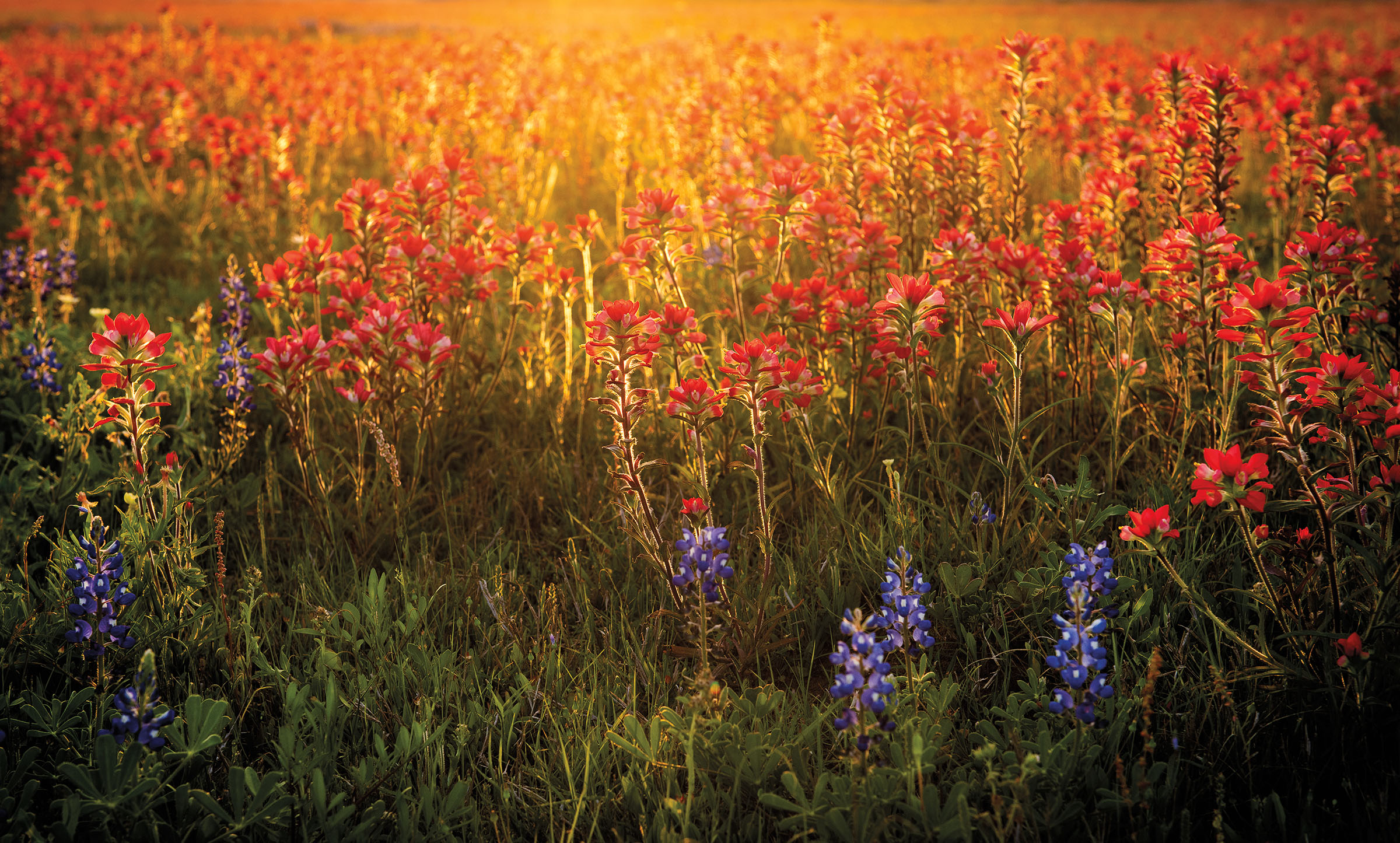
Indian Paintbrush
Hummingbirds go crazy for this plant’s bracts of bright red flowers, which fit the birds’ long, narrow beaks perfectly. The Indian paintbrush, shown here near New Berlin, blooms biennially and has the interesting habit of parasitizing the surrounding perennial grasses during the first phase of its life, stealing nutrients through its roots. The plant’s flower-like leaves are edible in small quantities, and the plant historically has been cultivated as a salve to relieve joint pain and a tonic for strengthening the immune system.








